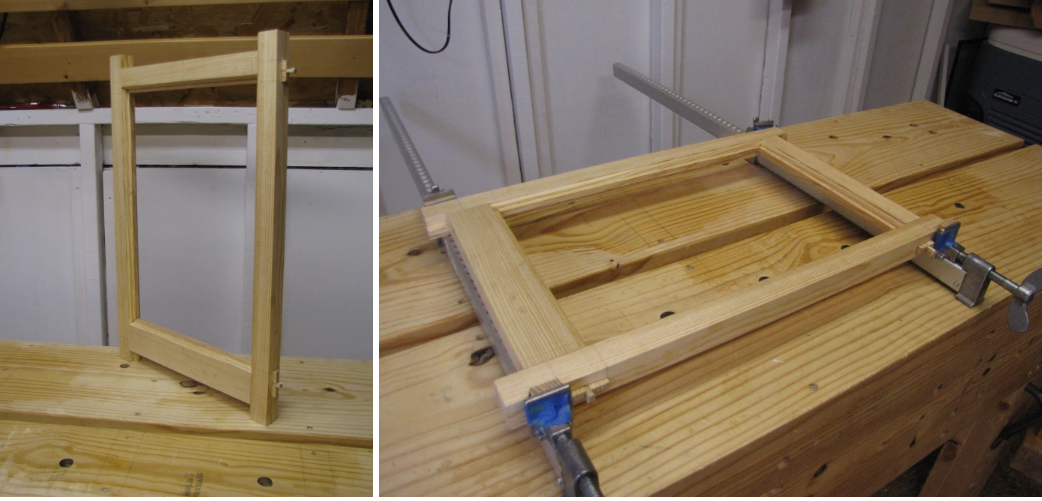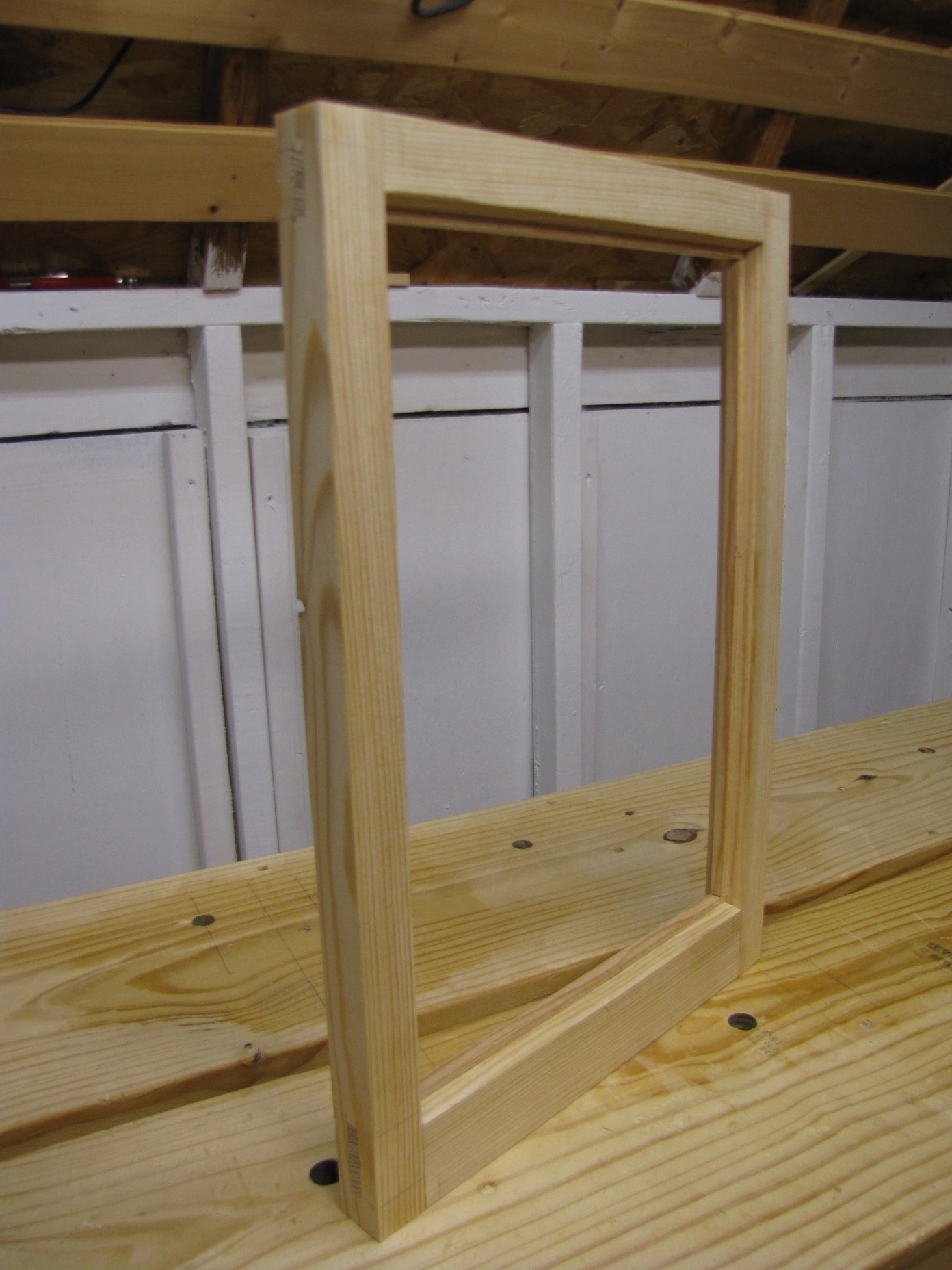In anticipation of the upcoming workshop reconstruction this spring, the individual found it necessary to construct a window sash.
Commencing the endeavour, an extensive exploration of various references was undertaken to grasp the intricacies of traditional window sash design and assembly (a compilation of these references is detailed subsequently).
It became evident that while the foundational design of sash joinery remained consistent across sources, there existed noteworthy disparities in construction techniques.
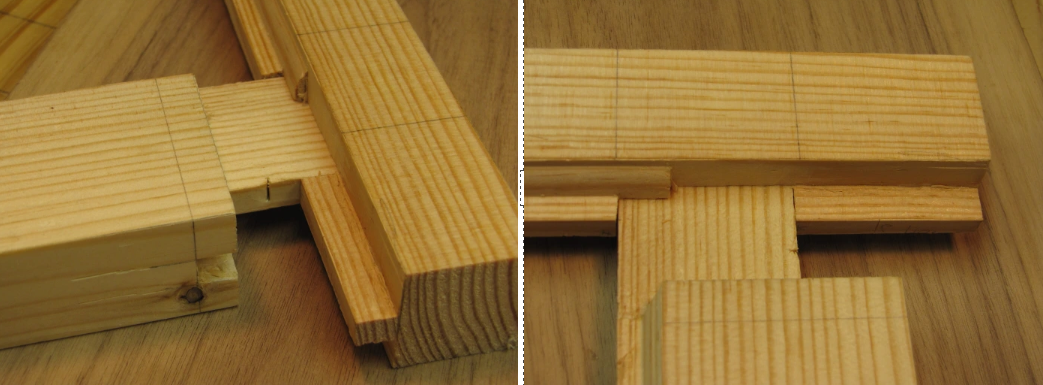
The pivotal connection in a window sash is the mortise and tenon joint. A consensus among nearly all sources was that these joints should be prepared before the completion of the moulding and glazing rabbet. The process of “sticking” the moulding profile, typically an ovolo, and the rabbet could be executed through diverse methods.
The British methodology involved using a moulding plane for the ovolo and a sash fillister for the rabbet. The resulting material between the cuts made by these planes constituted the fillet. Conversely, the American approach advocated the use of a “stick and rabbet” plane equipped with two irons, allowing for the simultaneous cutting of the ovolo and rabbet.
A somewhat more “modern” method involved utilizing a Stanley 45 with a sash iron. Due to the Stanley 45’s square iron and limited supporting surfaces, it posed challenges when confronted with challenging grain patterns.
For the construction of the window, the individual opted for the Stanley 45, equipped with a freshly rehabilitated and honed sash iron. This choice was not dictated by preference but rather by the absence of dedicated sash planes, making the 45 the sole available option. The individual expressed a desire to acquire dedicated sash planes in the future.
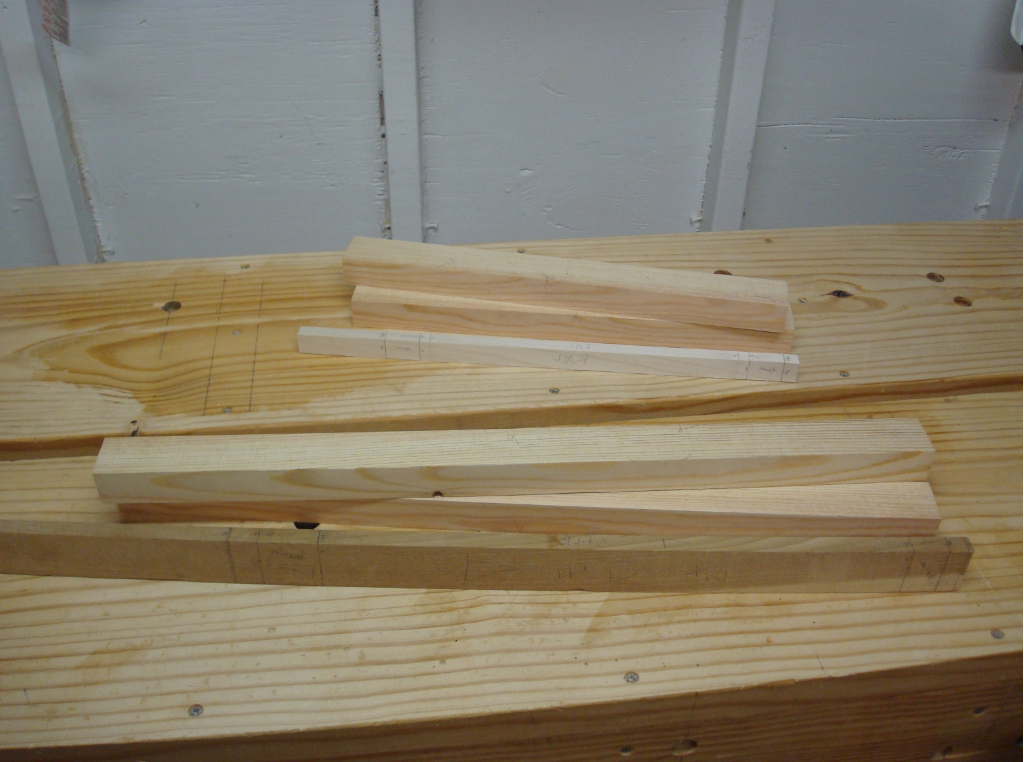
In the realm of traditional craftsmanship, window sashes are customarily fashioned from resilient, straight-grained materials, with softwoods being the prevalent choice in the United States.
Faced with the absence of a suitable 6/4 eastern white pine source, an alternative route was taken by the individual in question, who opted to construct the window sash using a 2×6 obtained from a local home centre—specifically ponderosa pine.
The task demanded meticulous material selection, seeking a board from which material could be ripped in a manner that aligned the growth rings perpendicularly to the surface, akin to the characteristics of quarter-sawn lumber.
The subsequent course of action involved the crafting of a “story stick,” a conventional, handcrafted template employed in the art of sash-making. This stick serves to delineate the comprehensive dimensions of the window, specifying the placement and dimensions of joints and mouldings.
Adhering to the methodology outlined in Doormaking and Window-Making, the individual proceeded to mark out the joints and moulding dimensions on two separate “story sticks”—one designated for rails and the other for stiles.
Dimensioning of the rails and stiles for the sash was executed based on the measurements derived from the “story stick,” accounting for the opening’s height and width. In the case of a petite casement window, the stiles and upper rail measured 1 3/4 inches in width, while the bottom rail spanned 2 1/2 inches.
The dimensions of the rails and stiles deviated slightly from the conventional 1 1/2 inches, approximating around 1 1/4 inches due to the necessity of planning out some inherent twist in the board.
Fortunately, the design of the Stanley sash iron accommodated a modest range of thickness, mitigating concerns associated with excessively thin stock, which could yield a glazing rabbet of insufficient width.
With the rails and stiles securely clamped to the “story sticks,” the next step involved the meticulous transfer of joinery layout lines using a knife. This process extended beyond mere markings, with a marking gauge employed to define the depths of tenons, mortises, and mouldings—each set at a precise 3/8-inch depth.
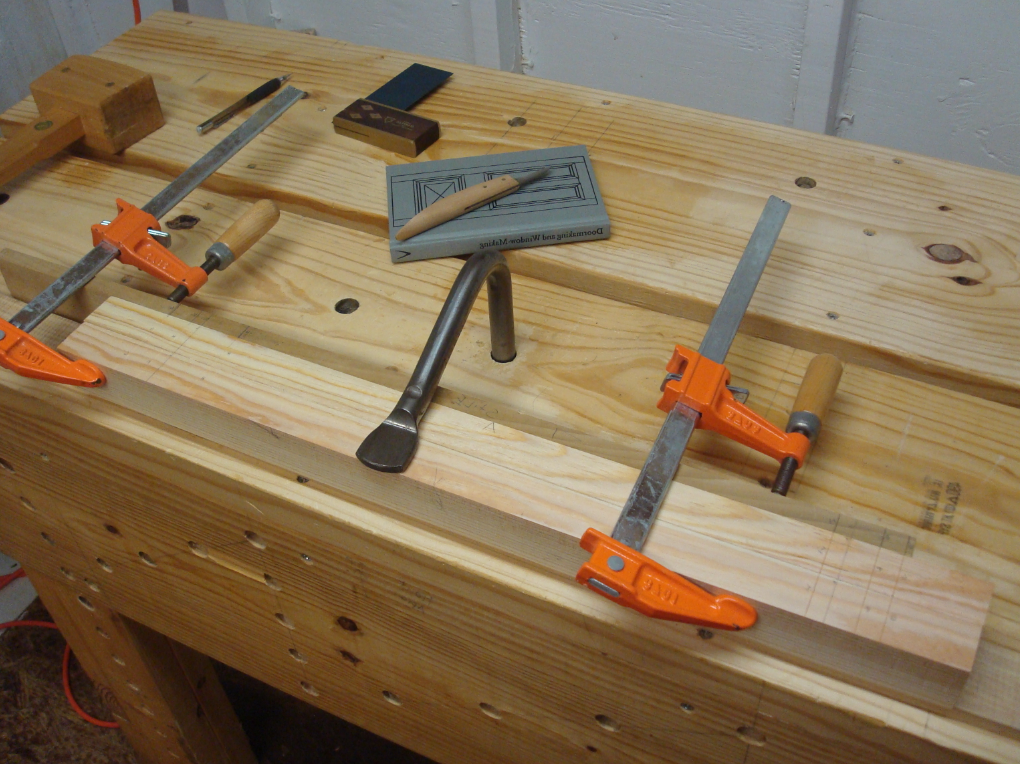
After indicating the sections, the subsequent phase involved creating mortises and cutting the tenon cheeks. I employed my Stanley 45 to shape the glazing rabbet and apply the Ovolo moulding.
The mortise chisel must align with the fillet’s width. In my case, it was slightly smaller (5/16″), requiring additional paring in several subsequent steps to rectify this disparity.
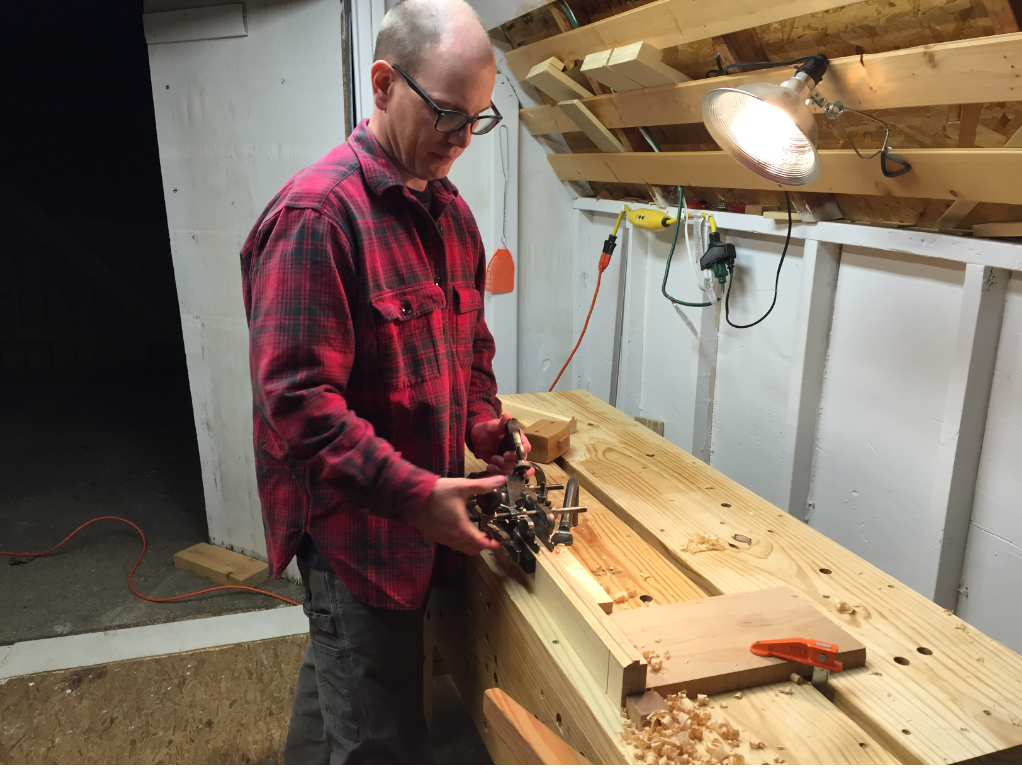
The shoulders of the tenons were cut with a saw, and the width of the tenons was adjusted to match the mortise. Following that, the haunch sockets on the rails, which accommodate the fillet from the stiles, were then carved.
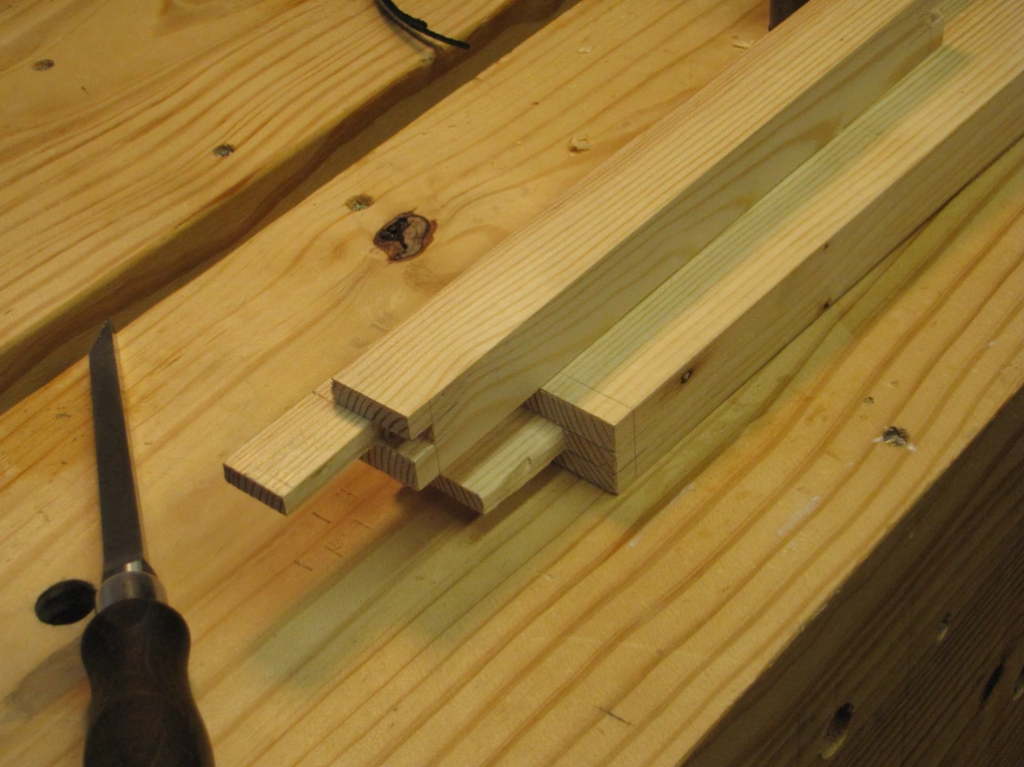
Before the assembly stage, a scribed joint was crafted to ensure that the ovolo moulding on the stile overlapped with the ovolo on the rails. The scribing process unfolded as follows: the ovolo moulding on the stile was removed at the mortise, leaving approximately 1/2″ of ovolo near the inner mortise wall, while retaining the fillet to create the haunch.
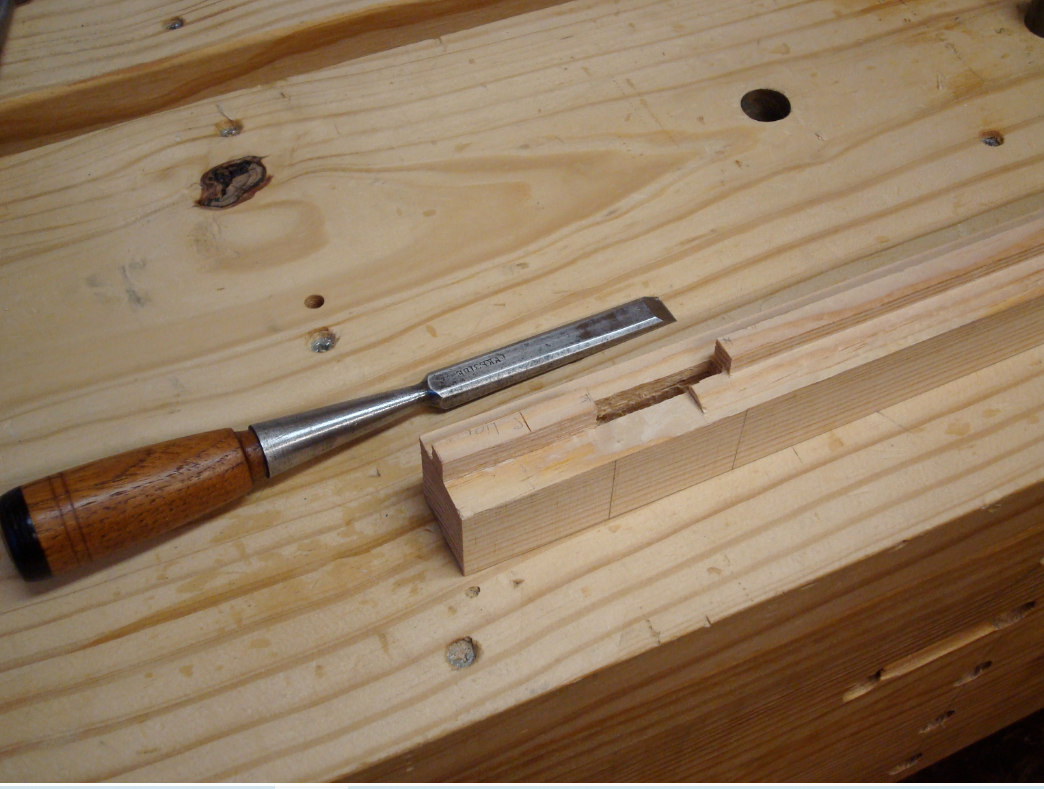
After paring away the relevant portion of the ovolo moulding on the style, the rail’s end underwent a process where the ovolo was initially pared using a 45-degree mitre block.
Subsequently, an in-cannel gouge suitable for the size of the ovolo moulding was employed to remove the mitred material, forming the excavated area where the ovolo on the stile would pass beneath the ovolo on the rail.
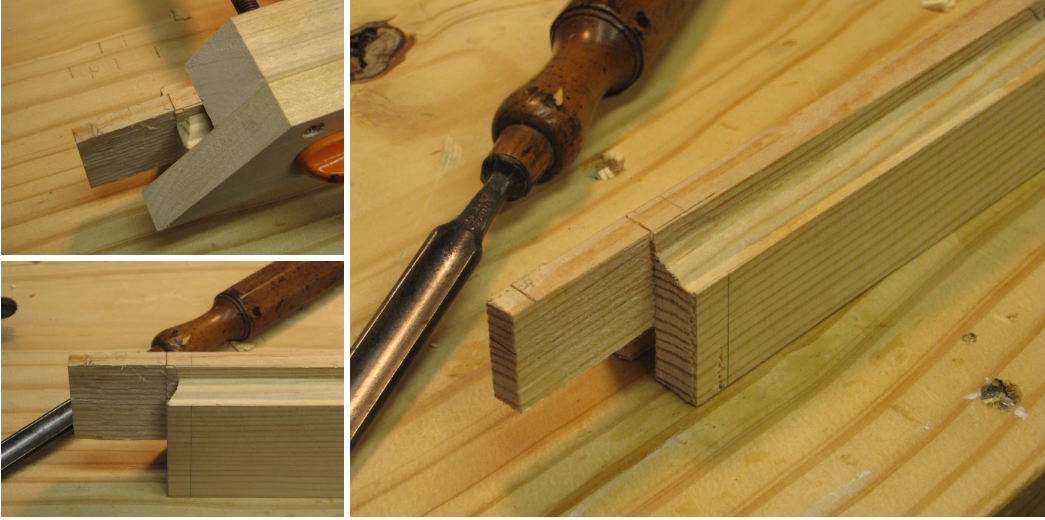
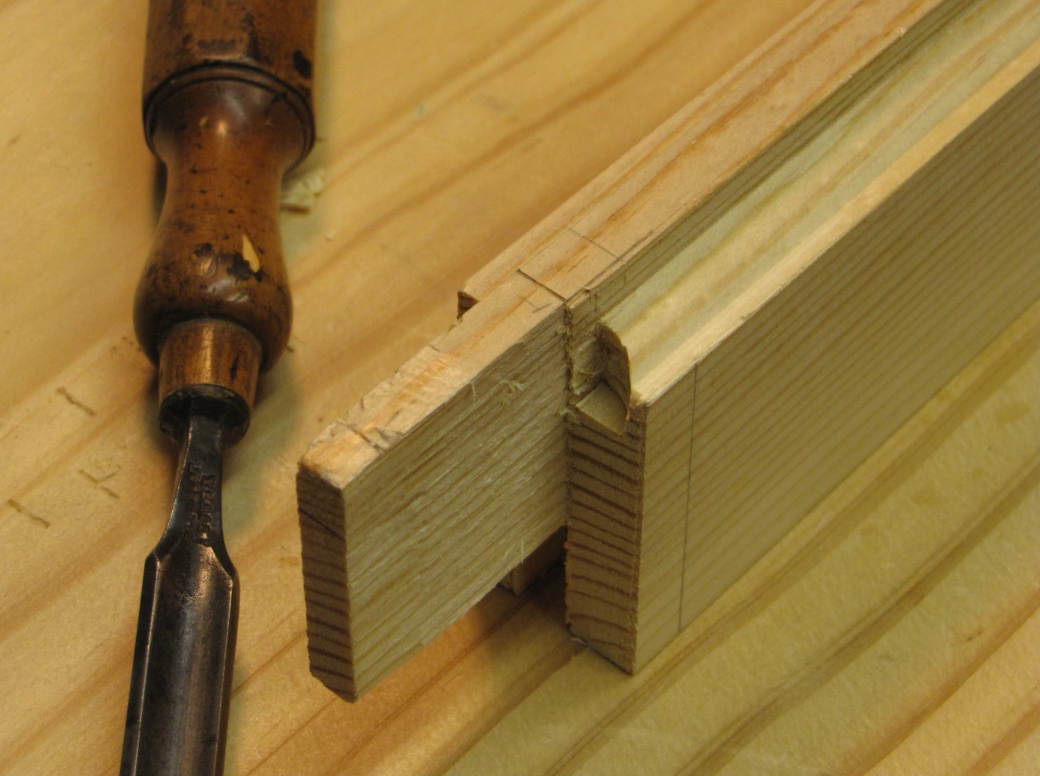
Upon completing all joinery and scribing, each joint underwent a test fit. Once a satisfactory fit was achieved, the sash was assembled.
Before assembly, kerfs were sawed into the tenons to accommodate oak wedges. Hide glue was applied, and the joints were secured with clamps, after which oak wedges were driven in to act as a mechanical complement to the glue.
It was gratifying to measure the diagonals of the sash and find them congruent, indicating the successful creation of square joints all around.
After the glue had cured, the horns were sawed off, and the sash was refined using a smoothing plane. This project served as a valuable learning experience, and I hope this post proves helpful to others venturing into sash joinery.
